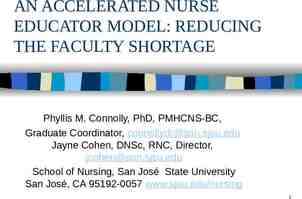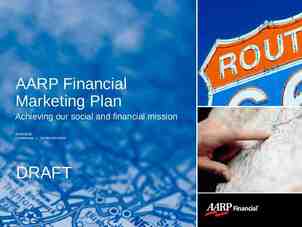CAMPUS MASTER PLAN OBSERVATIONS March 28-29, 2006
66 Slides7.28 MB
CAMPUS MASTER PLAN OBSERVATIONS March 28-29, 2006
Agenda Observations -History -Natural Systems -Built Systems -Summary of Observations Master Plan Guiding Principles Concept Plan Next Steps
December 1-2 Kick-off and Focus Groups January 17-18 February 1-3 Space Opportunities Meetings (Paulien) March 28-29 Summary of Observations / Concept Plan April Campus Workshop May Draft Plan Open Forums June - August Development of Plan/Guidelines September Final Draft Plan Open Forums October BOT Presentation Final Plan/ Design Guideline s Precinct Studies Observations / Concept Development Master Plan: Schedule 2005-2006
University Ideals ‘A public university focused on science and technology’ Multi-disciplinary Education Cutting-edge Research Innovative Technology Entrepreneurial Environment Vibrant Campus Life Professional Growth Diverse Population Intimate Community
History Campus Evolution 1881-1909 Acquired Building 1881 – an act of the New Jersey state legislature held a contest to determine which municipality would become home to the state's urgently needed technical school. “.a rich history with its beginnings developing from the industrial age.”
History Campus Evolution 1909-1949 Acquired / New Existing Building 1920 to 1949 - the Newark Technical School was transformed into the Newark College of Engineering, under the direction of Dr. Allan R Cullimore. 1946 - about 75 percent of the freshman class had served in the armed forces.
History Campus Evolution 1950-1969 New Building Existing Building 1960 - Weston Hall razed and replaced with new seven story structure -Doctoral level programs were introduced 1966 - an 18-acre expansion was completed
History Campus Evolution 1970-1979 New Building Existing Building 1975 - The New Jersey School of Architecture is created; the institution had evolved into a technological university. -Emphasis on a broad range of graduate and undergraduate degrees and dedication to significant research and public service. -A new university name, New Jersey Institute of Technology, signified the institution's expanded mission.
History Campus Evolution 1980-1989 Acquired Building Existing Building 1982 – The College of Science and Liberal Arts is established. 1988 - The School of Industrial Management is established.
History Campus Evolution 1990-1999 New Building Existing Building 1994 -The Albert Dorman Honors College was established.
History Campus Evolution 2000 New Building Existing Building 2001 - The College of Computing Sciences was created. 2004 – The new Campus Center replaces the Hazell and Wilson Center buildings. -Lubetkin Field undergoes a 1.2 million renovation -Riverfront Stadium became the
Observations Denotes campus boundary and area of observations 2005 Campus Plan
Observations Natural Systems
Observations Landscape Master Plan Completed Jan. 2005 by Thomas Balsley Associates
Observations Green Space Pervious surfaces allow water to percolate into the soil where it is cleaned, cooled and slowed down before reaching water bodies or ground water tables.
Observations Plaza Space
Observations Major Open Spaces
Observations Impervious Surfaces Impervious surfaces – such as pavement, roofs, and other compacted areas - send rain water into the storm water management system. Unfortunately, increased impervious surface also increases the volume and velocity of water entering the system which can result in back-up, over-flow, and ultimately flooding due to poor drainage.
Observations Impervious Surfaces [Aggregated] Impervious surfaces take up 80% of the campus.
Observations Pervious Surfaces [Aggregated] Pervious surfaces take up 20% of the campus.
Observations Impervious v. Pervious Surfaces
Observations 125’ Topography 108’ Highest Elevation Lowest Elevation The elevation changes from a high point on campus of 108’ at the athletic field, to a low point of 65’ at the edge of Eberhardt lawn. There is a 43’ change in elevation across campus, from East to West. 65’
In Context Relationship to New York City 280 Approx. 13 miles 95
In Context Transit Subway Commuter Rail Light Rail 20 min. walk 10 min. walk NJIT Campus Broad St. Station 5 min. walk Penn Station 5 min. walk 10 min. walk 20 min. walk
In Context Relationship to Downtown Walk Times Riverfront Stadium Univ. Heights Science Park UMDNJ Newark Museum Essex Community College NJ Performing Arts Rutgers University Center Cultural Facilities 5 min. walk NJIT Campus 10 min. walk JFK Rec Center Penn Station Devils Arena Symphony Hall
In Context Green Space Parks NJIT Campus
In Context Historic Districts NJIT Campus James St. Historic District Four Corners Historic District Ironbound Lincoln Park Historic District
Surrounding Context James St. Historic District Land Ownership NJIT Campus James St. Historic District Four Corners Historic District Lincoln Park Historic District
Surrounding Context James St. Historic District Proposed Conceptual Plan NJIT Campus
Surrounding Context Rutgers University Masterplan Masterplan completed by Ayers Saint Gross Architects December 2003 Existing Buildings Proposed Buildings Proposed Housing Proposed Garage
Surrounding Context Univ. Heights Science Park Masterplan completed by Gruzen Samton Architects May 6, 2002 Historic Jail Digital Center Dev’t (2008) 2010 Dev’t: Retail / Food on 1st Flr. Int’l Center for Public Health EDC I - III
Surrounding Context American Campus Communities 812 beds Fitness center Business center Game Room / Rec Area 10 laundry rooms 10 lounges 6,353 sf of street retail
Surrounding Context Adjacent Masterplans Broad Street Station James St. Historic District Masterplan University Heights Science Park Masterplan Subway 800 bed new housing NJIT Campus 600 bed new housing Rutgers University Masterplan Science Park HS Essex Community College
In Context Local Street Network* Principal Arterial Minor Arterial 280 CBD Street Collector Street Broad St. NJIT Campus Market St. *Information collected from: www.newarkbroadstreet.org
Observations Vehicular Circulation Primary Streets Secondary Streets
Observations Major Pedestrian Flow Primary Streets Secondary Streets Pedestrian Paths
Observations Circulation Conflicts Primary Streets Secondary Streets Pedestrian Paths Major Points of Conflict
Observations Gateways / Entry Built Gateway Entry Points Visitor Lot Admissions
Observations Service Docks Visitor Lot Admissions
Peer Institutions NEW JERSEY INSTITUTE OF TECHNOLOGY GEORGE WASHINGTON UNIVERSITY Newark, NJ (Founded 1881) Undergraduate — 5,263 Graduate — 2,795 Total Student Population — 8,058 Faculty — 500 Staff — 700 Total Campus Population — 9,258 Washington, D.C. (Founded 1821) Undergraduate — 7,562 Graduate — 4,704 Total Student Population — 12,266 Faculty — 1,396 Staff — 4,664 Total Campus Population — 18,326 Buildings — 2,653,096 gsf Land — 45 acres Parking — 3,041 spaces Buildings — 6,440,649 gsf Land — 43 acres Parking — 2,778 spaces
Observations Parking
Observations Parking Surface Parking ON Campus: 815 spaces Surface Parking OFF Campus: Lot 12 Lot 12A Lot 12B Lot 12C Lot 18 Lot 18 34 50 22 20 126 spaces Lots 12A-C 350 spaces 476 spaces Deck Parking ON Campus: 1,750 spaces Total NJIT Parking: 3,041 spaces total Deck
Observations Lot 10 All Surface Parking Lots Lots 16 16A Lot 5 Lot 7 Lot 3
Observations All Surface Parking Lots [Aggregated] Surface parking lots take up about 14% of campus, or 5 acres. (excluding off campus lots 12 18)
Observations Building Use Academic Administrative Athletics/Rec Residence Life Public Facilities Mgmt Parking Deck
Projected Needs Existing Target 1 Target 2 Student Headcount 8,000 10,000 12,000 Academic 0 0 Offices 0 Teaching & Open Labs 0 Assembly Spaces 0 Research Labs Library PE / Recreation Housing 0 Fu Need 0 Balance - Excess
Observations Maintenance Needs Heavy Moderate Heavy Moderate Light
Utilities / Maintenance Observations Utilities Site Plan taken from the Utilities Site Plan taken from the Facilities and Financing Master Plan: Spring 1990 Facilities and Financing Master Plan: Spring 1990
Observations Summary Great momentum of recent campus improvements Good plans in place for surrounding campus areas will improve image and livability of Newark Safety on campus is very good
Observations Summary Great momentum of recent campus improvements Good plans in place for surrounding campus areas will improve image and livability of Newark Safety on campus is very good Visitor experience could be improved getting to and on campus Parking need for visitor events Facilities needs for current and planned growth Improve safe connections to surrounding institutions. Enhance the student life experience through improved athletics / recreation venues and facilities that recognize the creative, innovative campus population. Limited on and off campus entertainment, retail, hotel, and conference venues Potential acquisition of High School gives NJIT needed flexibility
Mission As a major public technological university, NJIT is an important conduit through which technology flows into society. NJIT’s faculty, staff and students are committed and focused on the mission of education, research, service and economic development, to play a critical role in shaping New Jersey's future. Excellence in professional education Preparing students for productive careers Conducting research in multi-disciplinary fields Service to local communities and broader society Encouraging a diverse student body Advancing the use of technology as a means to improve the quality of life
Draft Planning Principles Develop facilities and resources to support NJIT’s mission and future long-term growth Reinvigorate the social, academic and cultural life on campus by way of permeating technological awareness and shaping of a “life of the mind” Establish significant, meaningful spaces to encourage interdisciplinary collaboration and professional development Create inviting approaches, distinct gateways and strong pedestrian connections to downtown and surrounding neighborhoods Increase connections between the university and adjacent institutions
Draft Concept Plan Establish a distinct presence and character Define edges of campus Create inviting approaches and powerful gateways Strengthen pedestrian connections to downtown and surrounding neighborhoods Evaluate loading and service function placement within the campus as a whole
Draft Concept Plan Create a Strong Central Core Increase the green space on campus; maintain and develop an integrated string of significant open spaces Clarify the connections between existing outdoor recreation areas Create powerful view corridors Realize potential to create axial entry sequence off of New St., from Rutgers University at MLK Blvd.
Draft Concept Plan Develop a framework to support the responsible capacity of the campus Maximize current building efficiency by redistribution of rooms, equipment storage and circulation. Utilize edge sites to their fullest potential as “gateways” to the university Develop sites in a meaningful and effective manner for future growth
Draft Concept Plan Promote Clear Connections Share surrounding resources with neighborhood institutions Foster the development of the university district and the city of Newark Create an evident character to develop the connection from NJIT through Rutgers, continuing to Military Park Strengthen residential life in and around the university through publicprivate partnerships along New and Halsey Streets, as well as in the James Street Historic District
Draft Concept Plan Establish a distinct presence and character Create a Strong Central Core Develop a framework to support the responsible capacity of the campus Promote Clear Connections
Observations Denotes campus boundary and area of observations 2005 Campus Plan
December 1-2 Kick-off and Focus Groups January 17-18 February 1-3 Space Opportunities Meetings (Paulien) March 28-29 Summary of Observations / Concept Plan April Campus Workshop May Draft Plan Open Forums June - August Development of Plan/Guidelines September Final Draft Plan Open Forums October BOT Presentation Final Plan/ Design Guideline s Precinct Studies Observations / Concept Development Master Plan: Schedule 2005-2006







































































